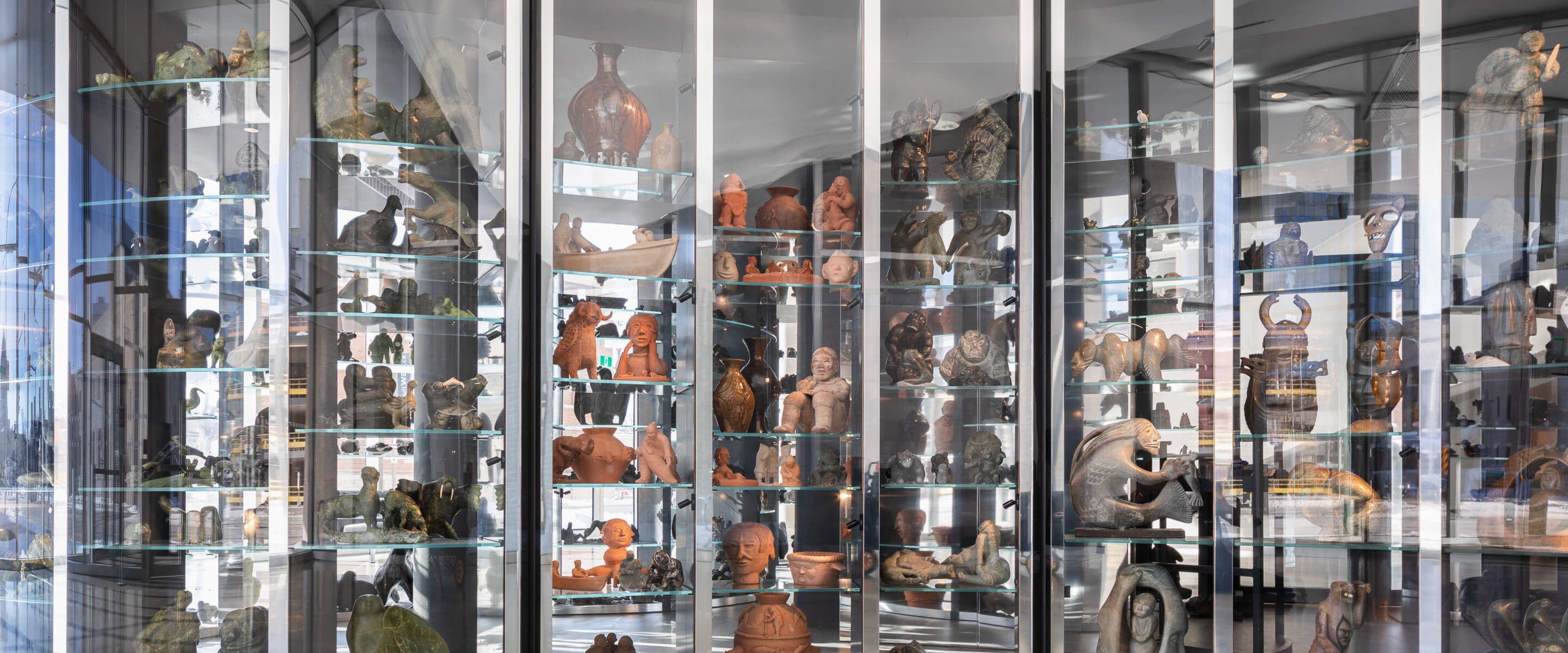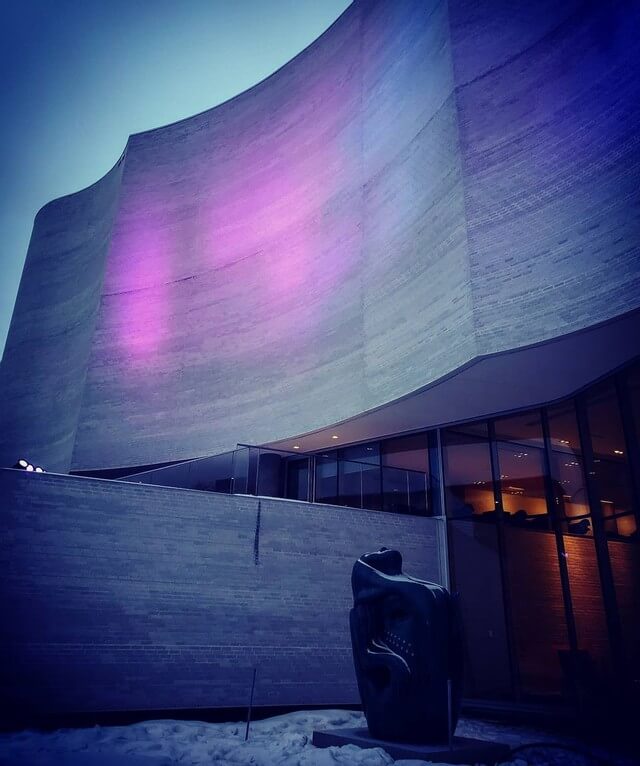The Winnipeg Art Gallery (WAG), the oldest public art gallery in Western Canada, will reopen its doors to the public on March 27 with a new exhibition space containing the largest public collection of contemporary Inuit art in the world. Designed by Los Angeles-based firm Michael Maltzan Architecture in collaboration with local associate firm Cibinel Architects Ltd., the $55 million addition, Qaumajuq, adds an additional 40,000 square feet to the southern end of the original 120,000-square-foot gallery designed by local architect Gustavo da Roza in 1971.
Qaumajuq (meaning “it is bright, it is lit” in Inuktitut, one of the principal Inuit languages of Canada) was designed with extensive consultation from the Indigenous Advisory Circle, an advisory group of representatives from the four regions of Inuit Nunangat: Inuvialuit Settlement Region, Nunavut, Nunavik, and Nunatsiavut.

“The center is much more than a building,” reads a press release. “It will amplify the voices of the artists to promote cultural understanding and innovate the art museum.” To achieve this lofty goal, Qaumajuq added new gallery spaces, classrooms, research facilities, and an interactive theater to the WAG. At the center of the entrance hall is the Visible Vault, or Ilavut (“our relatives” in Inuktitut), a three-story glass vault that displays a portion of the museum’s Inuit art collection of over 14,000 objects including carvings, prints, textiles, and new media.
“You can imagine the visible vault,” Michael Maltzan explained in a video interview, “as a conduit between what is underground, often hidden from view, being transported up to the light-filled gallery, floating above the lobby spaces.” On the floor above the Visible Vault are the three galleries—Pimâtisiwin (“life and the act of living, to be alive” in Cree/Ojibway), Giizhig/Kisik (“sky, heaven, day” in Cree/Michif/Ojibway), and Qilak (“sky” in Inuktitut), the main gallery, with the Qilak alone totaling more than 8,000 square feet.

Michael Maltzan Architecture was inspired to design Qaumajuq’s signature facade following the design team’s 2013 visit to Nunavut, the northernmost territory of Canada, where they were struck by the region’s distinct light qualities as well as its iceberg-populated landscape. “I was fascinated by the quality of light in Winnipeg,” Maltzan said in a lecture hosted by WAG. “The scallops of the building facade allow the light and the shadows to animate the facade, while the white granite’s color and texture were chosen to interact with the range of color and quality of the light across the year.” At night, the billowy facade will display abstract projections reminiscent of the Northern Lights, the natural light display often seen in the sky above Nunavut. In addition, two newly commissioned sculptures—Tuniigusiia/The Gift, by Goota Ashoona, and Time to Play, by Abraham Anghik Ruben—will be displayed in the building’s outdoor plaza to welcome visitors.
In anticipation of Qaumajuq’s unveiling this Sunday, the museum will host a two-day virtual event beginning today, March 26, that will offer a sneak peek of the art and architecture of Qaumajuq with co-hosts Dr. Stephen Borys, WAG Director & CEO, Julia Lafreniere, WAG Head of Indigenous Initiatives, and Nunavut’s Madeleine Allakariallak, former host of CBC North’s Igalaaq.

Qaumajuq’s first exhibition, Inua (meaning “spirit” or “life force” in many dialects across the Arctic), will be installed in the Qilak gallery and was curated by an all-Inuit team representing the four regions of Inuit Nunangat, the homeland of Inuit in Canada, and displays the work of nearly 90 Indigenous artists underneath large circular skylights. Inua will be on display from the annex’s opening through December 19, and will be free to the public from March 27 through April 2.


























